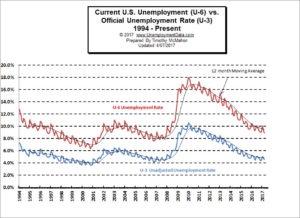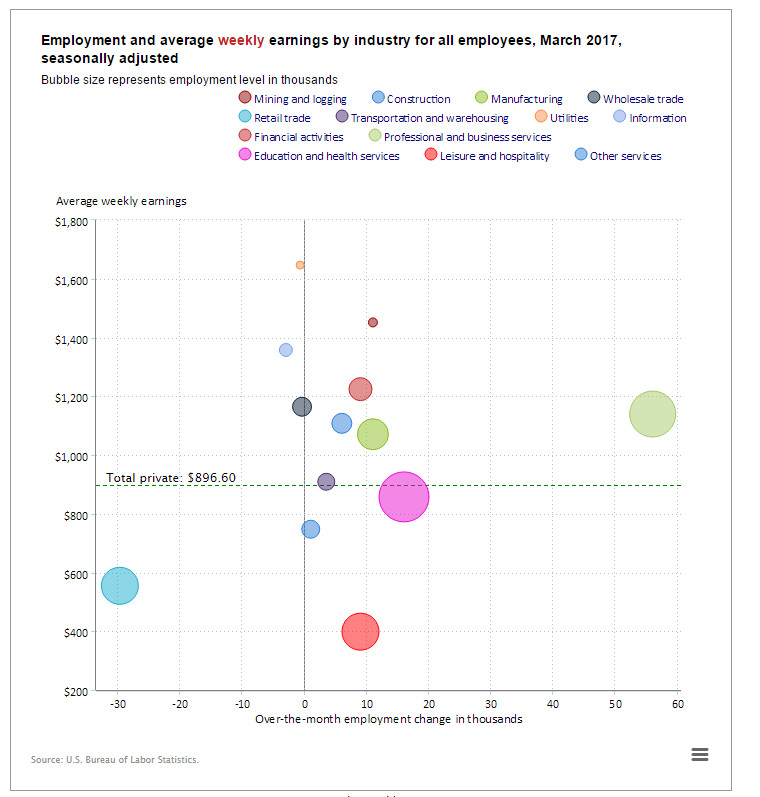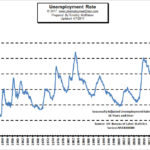The U.S. Bureau of Labor Statistics (BLS) released their monthly Employment/Unemployment report for the month ending in March on April 7th. The widely publicized Seasonally Adjusted U-3 Unemployment rate was 4.5% down from 4.7% in February. While the broader U-6 unemployment rate that includes discouraged workers and other “marginally attached” individuals was 8.9% down from 9.5% in February.
The BLS’ Unadjusted U-3 was 4.6% in March down from 4.9% in February. The Gallup alternatives presented mixed results with Gallup’s Unadjusted U-3 at 5.7% up from 5.5% in February while Gallup’s version of the U-6 was unchanged at 13.7%.
The BLS Commissioner’s statement said, “The unemployment rate declined by 0.2 percentage point to 4.5 percent in March. Nonfarm payroll employment edged up by 98,000, following gains in January (+216,000) and February (+219,000). In March, job gains occurred in professional and business services and in mining, while retail employment declined.”
In the above chart we can see employment growth over the month. The light blue circle in the lower left corner represents a loss of about 30,000 low paying jobs in the retail trade sector. This was partially offset by a gain of about 10,000 even lower paying jobs in the leisure and hospitality industry (red circle) combined with the large pink circle in the center (i.e. Education and Health Services). Fortunately, There weren’t many circles on the left hand side and the big gainer was in the professional and business services sector (the light green circle) which gained 56,000 jobs and has an above average weekly salary of $1,139.40.
See Also:
The seasonally adjusted unemployment rate from 1948 to the present is one of the most watched statistics. Where is it now and should you trust it?

Current Employment Data – How many jobs are there actually? This chart shows Employment since Jan 2000 and what the current trend is.
Historical Employment Data Chart– How Many People Are Actually Employed? This chart shows the actual employment rate without all the mumbo jumbo. It gives a clear picture of the employment level in the United States from 1939 to the Present. When employment is rising the economy is growing. When the employment rate levels off or declines times are not so good. Take a look and see how employment rates correspond to recessions over time.
Misery Index– Created by economist Arthur Okun to help gauge the level of misery the average person is suffering. It is a combination of the inflation rate and the unemployment rate.
Seasonally Adjusted Unemployment Rate in Table form– If you want to see the actual numbers.


